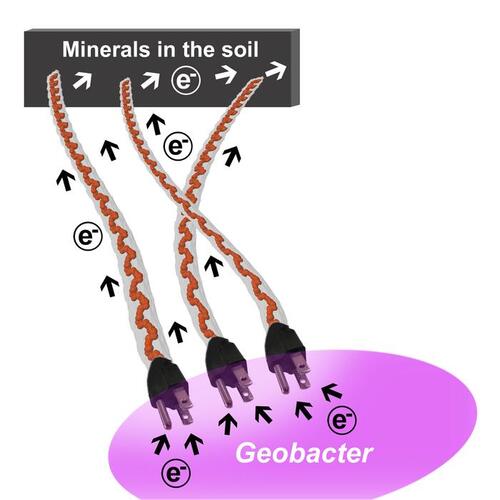
Researchers from the Malvankar Group and NOVA School of Science and Technology published findings in Nature Communication that reveal certain microbial nanowires serve as “living wires” to exhale electrons into soil and neighboring bacteria. These nanowires act as electric hairs, connecting living cells to the external environment and creating a natural electrical grid beneath the Earth’s surface. The authors’ work sheds light on how diverse environmentally important microbes overcome barriers to survival in extreme anoxic conditions, potentially opening new avenues for energy generation and environmental mitigation strategies.
Despite evidence of intricate electron transfer pathways, how microbes swiftly wire electrons to the external environment remained a mystery. Now, the researchers revealed that periplasmic cytochromes PpcABCDE from Geobacter sulfurreducens efficiently transfer electrons directly to OmcS nanowires through transient binding, with the least prevalent cytochrome (PpcC) exhibiting the highest efficiency. By injecting electrons into filaments on bacterial surfaces, Geobacter can anaerobically discard excess electrons produced during metabolism to minerals in the soil.
Associate Professor Nikhil Malvankar, Ph.D., is a recipient of the Blavatnik Fund for Innovation at Yale, which aims to accelerate the translation of early-stage life science research into impactful products. In a Blavatnik profile, Malvankar said “We learned that these bacteria were using protein nanowires almost like snorkels to exhale electrons into soil or partner bacteria. This means that these living wires could transmit electricity, connecting living cells to the outside world.”
The study included Pilar C. Portela and MB&B students Catharine C. Shipps, Ph.D., Cong Shen, Ph.D., and Vishok Srikanth, Ph.D. Srikanth received the Mary Ellen Jones Dissertation Prize in 2019 in part for his work on this project and Shipps was awarded the Annie Le BBS Fellowship.
This breakthrough by the authors not only provides insights into microbial survival strategies in anoxic conditions but also holds promise for engineering improved microbial chassis for various applications, particularly in reducing global methane emissions to combat climate change.
By: Brigitte Naughton
Photo credit: Eric Martz